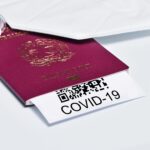Strategic Tips for Securing an Amazing Mobile Plan in Canada
Beyond choosing a provider, there are several strategies you can employ to ensure you get the best possible deal on your Canadian mobile plan. First and foremost, always opt for a “Bring Your Own Device” (BYOD) plan if you already have an unlocked smartphone. BYOD plans are significantly cheaper per month because you are not financing a new handset through the carrier. Second, be strategic about when you sign up. The best promotions are consistently offered during specific times of the year, such as the back-to-school period (August-September), Black Friday (November), and Boxing Day (December). If your arrival aligns with one of these events, you can secure a plan with double the data or a lower monthly price that you can keep for years. Additionally, some providers and third-party services offer free SIM card delivery to your home country before you depart, allowing you to prepare in advance. Finally, always read the fine print regarding data speeds and overage charges. Some budget plans may offer large amounts of data at reduced 3G or 4G speeds, and per-gigabyte overage fees on certain plans can be notoriously high in Canada. Choosing a plan with features that either pause your data or throttle your speed after you hit your limit can save you from costly surprises.
Frequently Asked Questions
What is a flanker brand in the Canadian mobile market?
A flanker brand is a secondary mobile provider that is owned and operated by one of Canada’s “Big Three” carriers (Rogers, Bell, or Telus). Brands like Fido, Koodo, and Virgin Plus are flanker brands that use their parent company’s reliable network infrastructure but offer more competitive pricing and flexible plans to attract a different customer segment.
How can I get a Canadian phone plan without a credit history?
The easiest way to get a Canadian phone plan without a credit history is to choose a prepaid plan. Prepaid plans require you to pay for your service upfront for a 30-day period, which completely eliminates the need for a credit check. All major providers and their flanker brands, such as Chatr, Public Mobile, and Fido, offer a wide variety of excellent prepaid options.
What is the main difference between a physical SIM and an eSIM?
A physical SIM is a small, removable chip that you insert into your phone to connect to a mobile network. An eSIM is a digital, embedded SIM that is built into your phone’s hardware and is activated by scanning a QR code. The primary advantage of an eSIM for newcomers is the ability to set up a Canadian plan before arriving in the country and the option to use two mobile plans on one device simultaneously.
What are the “Big Three” mobile providers in Canada?
The “Big Three” mobile providers in Canada are Rogers, Bell, and Telus. These three companies own and operate the vast majority of the national wireless infrastructure, providing the most extensive network coverage across the country. They also own numerous secondary and discount brands that offer more affordable plans on their networks.
Talk to us to find out more. ->
The content above is not intended to provide legal advice or opinions of any kind and may not be used for professional or commercial purposes.
- Fido & Chatr (Rogers Network): Fido is a popular choice for students due to its competitive data deals and occasional perks. Chatr is Rogers’ pure prepaid brand, offering simple, affordable plans with reliable nationwide coverage.Koodo & Public Mobile (Telus Network): Koodo is known for its excellent customer service and transparent billing (no surprise data overage charges with their Shock-Free Data feature). Public Mobile is a self-serve, online-only provider with some of the lowest prices in the market and a unique rewards system.Virgin Plus (Bell Network): Similar to Fido and Koodo, Virgin Plus offers strong mid-tier plans but often differentiates itself with member benefits, including discounts on food, fashion, and entertainment.Freedom Mobile: As a regional carrier primarily focused on urban centers in Ontario, British Columbia, and Alberta, Freedom Mobile can offer exceptionally low prices and large data buckets. However, its network coverage may be less reliable outside of major cities.
Strategic Tips for Securing an Amazing Mobile Plan in Canada
Beyond choosing a provider, there are several strategies you can employ to ensure you get the best possible deal on your Canadian mobile plan. First and foremost, always opt for a “Bring Your Own Device” (BYOD) plan if you already have an unlocked smartphone. BYOD plans are significantly cheaper per month because you are not financing a new handset through the carrier. Second, be strategic about when you sign up. The best promotions are consistently offered during specific times of the year, such as the back-to-school period (August-September), Black Friday (November), and Boxing Day (December). If your arrival aligns with one of these events, you can secure a plan with double the data or a lower monthly price that you can keep for years. Additionally, some providers and third-party services offer free SIM card delivery to your home country before you depart, allowing you to prepare in advance. Finally, always read the fine print regarding data speeds and overage charges. Some budget plans may offer large amounts of data at reduced 3G or 4G speeds, and per-gigabyte overage fees on certain plans can be notoriously high in Canada. Choosing a plan with features that either pause your data or throttle your speed after you hit your limit can save you from costly surprises.
Frequently Asked Questions
What is a flanker brand in the Canadian mobile market?
A flanker brand is a secondary mobile provider that is owned and operated by one of Canada’s “Big Three” carriers (Rogers, Bell, or Telus). Brands like Fido, Koodo, and Virgin Plus are flanker brands that use their parent company’s reliable network infrastructure but offer more competitive pricing and flexible plans to attract a different customer segment.
How can I get a Canadian phone plan without a credit history?
The easiest way to get a Canadian phone plan without a credit history is to choose a prepaid plan. Prepaid plans require you to pay for your service upfront for a 30-day period, which completely eliminates the need for a credit check. All major providers and their flanker brands, such as Chatr, Public Mobile, and Fido, offer a wide variety of excellent prepaid options.
What is the main difference between a physical SIM and an eSIM?
A physical SIM is a small, removable chip that you insert into your phone to connect to a mobile network. An eSIM is a digital, embedded SIM that is built into your phone’s hardware and is activated by scanning a QR code. The primary advantage of an eSIM for newcomers is the ability to set up a Canadian plan before arriving in the country and the option to use two mobile plans on one device simultaneously.
What are the “Big Three” mobile providers in Canada?
The “Big Three” mobile providers in Canada are Rogers, Bell, and Telus. These three companies own and operate the vast majority of the national wireless infrastructure, providing the most extensive network coverage across the country. They also own numerous secondary and discount brands that offer more affordable plans on their networks.
Talk to us to find out more. ->
The content above is not intended to provide legal advice or opinions of any kind and may not be used for professional or commercial purposes.
- Fido & Chatr (Rogers Network): Fido is a popular choice for students due to its competitive data deals and occasional perks. Chatr is Rogers’ pure prepaid brand, offering simple, affordable plans with reliable nationwide coverage.Koodo & Public Mobile (Telus Network): Koodo is known for its excellent customer service and transparent billing (no surprise data overage charges with their Shock-Free Data feature). Public Mobile is a self-serve, online-only provider with some of the lowest prices in the market and a unique rewards system.Virgin Plus (Bell Network): Similar to Fido and Koodo, Virgin Plus offers strong mid-tier plans but often differentiates itself with member benefits, including discounts on food, fashion, and entertainment.Freedom Mobile: As a regional carrier primarily focused on urban centers in Ontario, British Columbia, and Alberta, Freedom Mobile can offer exceptionally low prices and large data buckets. However, its network coverage may be less reliable outside of major cities.
Strategic Tips for Securing an Amazing Mobile Plan in Canada
Beyond choosing a provider, there are several strategies you can employ to ensure you get the best possible deal on your Canadian mobile plan. First and foremost, always opt for a “Bring Your Own Device” (BYOD) plan if you already have an unlocked smartphone. BYOD plans are significantly cheaper per month because you are not financing a new handset through the carrier. Second, be strategic about when you sign up. The best promotions are consistently offered during specific times of the year, such as the back-to-school period (August-September), Black Friday (November), and Boxing Day (December). If your arrival aligns with one of these events, you can secure a plan with double the data or a lower monthly price that you can keep for years. Additionally, some providers and third-party services offer free SIM card delivery to your home country before you depart, allowing you to prepare in advance. Finally, always read the fine print regarding data speeds and overage charges. Some budget plans may offer large amounts of data at reduced 3G or 4G speeds, and per-gigabyte overage fees on certain plans can be notoriously high in Canada. Choosing a plan with features that either pause your data or throttle your speed after you hit your limit can save you from costly surprises.
Frequently Asked Questions
What is a flanker brand in the Canadian mobile market?
A flanker brand is a secondary mobile provider that is owned and operated by one of Canada’s “Big Three” carriers (Rogers, Bell, or Telus). Brands like Fido, Koodo, and Virgin Plus are flanker brands that use their parent company’s reliable network infrastructure but offer more competitive pricing and flexible plans to attract a different customer segment.
How can I get a Canadian phone plan without a credit history?
The easiest way to get a Canadian phone plan without a credit history is to choose a prepaid plan. Prepaid plans require you to pay for your service upfront for a 30-day period, which completely eliminates the need for a credit check. All major providers and their flanker brands, such as Chatr, Public Mobile, and Fido, offer a wide variety of excellent prepaid options.
What is the main difference between a physical SIM and an eSIM?
A physical SIM is a small, removable chip that you insert into your phone to connect to a mobile network. An eSIM is a digital, embedded SIM that is built into your phone’s hardware and is activated by scanning a QR code. The primary advantage of an eSIM for newcomers is the ability to set up a Canadian plan before arriving in the country and the option to use two mobile plans on one device simultaneously.
What are the “Big Three” mobile providers in Canada?
The “Big Three” mobile providers in Canada are Rogers, Bell, and Telus. These three companies own and operate the vast majority of the national wireless infrastructure, providing the most extensive network coverage across the country. They also own numerous secondary and discount brands that offer more affordable plans on their networks.
Talk to us to find out more. ->
The content above is not intended to provide legal advice or opinions of any kind and may not be used for professional or commercial purposes.
Arriving in Canada as a student, temporary worker, or new permanent resident is an exhilarating experience filled with new opportunities. One of the first and most critical steps in settling into your new life is securing a reliable and affordable mobile phone plan. Staying connected with family back home, navigating a new city with GPS, searching for jobs, and integrating into Canadian society all depend on having a functional SIM card. However, Canada’s telecommunications landscape can be complex and expensive compared to other countries. This comprehensive guide provides essential insights into finding the best and most affordable SIM card options, tailored specifically for newcomers who may not have a Canadian credit history or be familiar with the local providers. Making an informed decision early on can save you significant money and prevent unnecessary stress, allowing you to focus on what truly matters: building your future in Canada.
Table of Contents
- Decoding Canadian Mobile Networks: The Big Three and Their Challenger Brands
- Prepaid vs. Postpaid Plans: The Crucial Decision for Newcomers in Canada
- A Modern Dilemma: Physical SIM vs. eSIM for Your Canadian Arrival
- Unveiling the Best Affordable SIM Card Options in Canada
- Strategic Tips for Securing an Amazing Mobile Plan in Canada
- Frequently Asked Questions
Decoding Canadian Mobile Networks: The Big Three and Their Challenger Brands
Understanding the structure of the Canadian mobile market is the first step toward finding an affordable plan. The industry is dominated by three major national carriers, often referred to as the “Big Three”: Rogers, Bell, and Telus. These companies own and operate the vast majority of the country’s wireless infrastructure, meaning their networks provide the most extensive coverage, particularly in rural and remote areas. While their premium plans offer the fastest speeds and largest data packages, they are also the most expensive and typically require a Canadian credit check for postpaid services. For newcomers, this can be a significant barrier. Fortunately, the Big Three also operate their own secondary or “flanker” brands. These brands, such as Fido (owned by Rogers), Virgin Plus (owned by Bell), and Koodo Mobile (owned by Telus), offer more competitive pricing and flexible plans while using the same reliable parent network. This means you can get the coverage of a premium provider at a much more accessible price point. Additionally, each of the Big Three has a third-tier, deep-discount brand like Chatr (Rogers), Lucky Mobile (Bell), and Public Mobile (Telus), which focus almost exclusively on basic, no-frills prepaid plans. These are often the most straightforward and affordable SIM card options for those just arriving in Canada.
Prepaid vs. Postpaid Plans: The Crucial Decision for Newcomers in Canada
One of the most important choices you’ll make is between a prepaid and a postpaid mobile plan. A postpaid plan is a contract-based service where you pay for your usage at the end of each monthly billing cycle. These plans often come with perks like device subsidies (getting a new phone for a lower upfront cost), larger data allowances, and family sharing options. However, their primary drawback for newcomers is the mandatory credit check. Without an established Canadian credit history, it is very difficult to be approved for a postpaid plan. This is where prepaid plans become an invaluable asset for international students, work permit holders, and visitors. With a prepaid (or “pay-as-you-go”) plan, you pay for your service upfront for a 30-day period. There is no contract, no credit check, and no risk of incurring surprise overage charges. You simply choose a plan with a set amount of talk, text, and data, and pay for it in advance. If you need more data, you can purchase an add-on. This flexibility and accessibility make prepaid plans the superior choice for most people arriving in Canada. While they might have once been considered basic, today’s prepaid plans from providers like Fido, Chatr, Koodo, and Public Mobile offer generous data packages and nationwide calling, rivaling many postpaid offerings in value.
A Modern Dilemma: Physical SIM vs. eSIM for Your Canadian Arrival
As technology evolves, so do your options for connecting to a mobile network. The choice between a traditional physical SIM card and a modern eSIM (embedded SIM) is a key consideration, especially for international travelers and students. A physical SIM is the small, removable chip you’ve likely used for years. It’s universally compatible with most phones and can be easily purchased at airports, provider kiosks, or convenience stores upon arrival. The primary advantage is its simplicity and widespread device support. An eSIM, on the other hand, is a digital SIM that is built directly into your device’s hardware. It can be activated by scanning a QR code provided by the mobile carrier, often allowing you to set up your Canadian phone plan before you even leave your home country. This is a tremendous advantage, as you can have data connectivity the moment your plane lands. Furthermore, eSIM technology allows you to use two plans simultaneously on one device (e.g., your Canadian plan and your home country’s plan), which is perfect for maintaining your original number while in Canada. Before opting for an eSIM, it is crucial to confirm that your smartphone is eSIM-compatible, as this feature is generally found on newer models.
Unveiling the Best Affordable SIM Card Options in Canada
Navigating the various brands to find the most affordable SIM card in Canada can feel overwhelming. The best option for you will depend on your specific needs, such as data usage, budget, and location. The flanker and third-tier brands consistently offer the best value for newcomers. For instance, providers like Fido, Koodo, and Virgin Plus are excellent mid-range choices. They frequently run promotions offering significant amounts of data (e.g., 20-50GB) for a competitive monthly price, often on a prepaid or bring-your-own-device (BYOD) basis, which avoids a credit check. They provide a strong balance of customer service, reliable network coverage (from their parent companies), and value-packed plans. For those on a tighter budget, the deep-discount brands are unbeatable. Public Mobile (Telus network) and Chatr (Rogers network) specialize in affordable prepaid plans with no hidden fees. Public Mobile is known for its rewards program that reduces your monthly bill for loyalty and referrals, though it operates on a self-serve online model with limited customer support. Chatr offers straightforward plans with options for limited-speed data to prevent overages, making it a predictable and budget-friendly choice. It is always wise to compare their current online offers, as promotions change frequently, especially during key periods like back-to-school season or Black Friday.
- Fido & Chatr (Rogers Network): Fido is a popular choice for students due to its competitive data deals and occasional perks. Chatr is Rogers’ pure prepaid brand, offering simple, affordable plans with reliable nationwide coverage.Koodo & Public Mobile (Telus Network): Koodo is known for its excellent customer service and transparent billing (no surprise data overage charges with their Shock-Free Data feature). Public Mobile is a self-serve, online-only provider with some of the lowest prices in the market and a unique rewards system.Virgin Plus (Bell Network): Similar to Fido and Koodo, Virgin Plus offers strong mid-tier plans but often differentiates itself with member benefits, including discounts on food, fashion, and entertainment.Freedom Mobile: As a regional carrier primarily focused on urban centers in Ontario, British Columbia, and Alberta, Freedom Mobile can offer exceptionally low prices and large data buckets. However, its network coverage may be less reliable outside of major cities.
Strategic Tips for Securing an Amazing Mobile Plan in Canada
Beyond choosing a provider, there are several strategies you can employ to ensure you get the best possible deal on your Canadian mobile plan. First and foremost, always opt for a “Bring Your Own Device” (BYOD) plan if you already have an unlocked smartphone. BYOD plans are significantly cheaper per month because you are not financing a new handset through the carrier. Second, be strategic about when you sign up. The best promotions are consistently offered during specific times of the year, such as the back-to-school period (August-September), Black Friday (November), and Boxing Day (December). If your arrival aligns with one of these events, you can secure a plan with double the data or a lower monthly price that you can keep for years. Additionally, some providers and third-party services offer free SIM card delivery to your home country before you depart, allowing you to prepare in advance. Finally, always read the fine print regarding data speeds and overage charges. Some budget plans may offer large amounts of data at reduced 3G or 4G speeds, and per-gigabyte overage fees on certain plans can be notoriously high in Canada. Choosing a plan with features that either pause your data or throttle your speed after you hit your limit can save you from costly surprises.
Frequently Asked Questions
What is a flanker brand in the Canadian mobile market?
A flanker brand is a secondary mobile provider that is owned and operated by one of Canada’s “Big Three” carriers (Rogers, Bell, or Telus). Brands like Fido, Koodo, and Virgin Plus are flanker brands that use their parent company’s reliable network infrastructure but offer more competitive pricing and flexible plans to attract a different customer segment.
How can I get a Canadian phone plan without a credit history?
The easiest way to get a Canadian phone plan without a credit history is to choose a prepaid plan. Prepaid plans require you to pay for your service upfront for a 30-day period, which completely eliminates the need for a credit check. All major providers and their flanker brands, such as Chatr, Public Mobile, and Fido, offer a wide variety of excellent prepaid options.
What is the main difference between a physical SIM and an eSIM?
A physical SIM is a small, removable chip that you insert into your phone to connect to a mobile network. An eSIM is a digital, embedded SIM that is built into your phone’s hardware and is activated by scanning a QR code. The primary advantage of an eSIM for newcomers is the ability to set up a Canadian plan before arriving in the country and the option to use two mobile plans on one device simultaneously.
What are the “Big Three” mobile providers in Canada?
The “Big Three” mobile providers in Canada are Rogers, Bell, and Telus. These three companies own and operate the vast majority of the national wireless infrastructure, providing the most extensive network coverage across the country. They also own numerous secondary and discount brands that offer more affordable plans on their networks.
Talk to us to find out more. ->
The content above is not intended to provide legal advice or opinions of any kind and may not be used for professional or commercial purposes.







